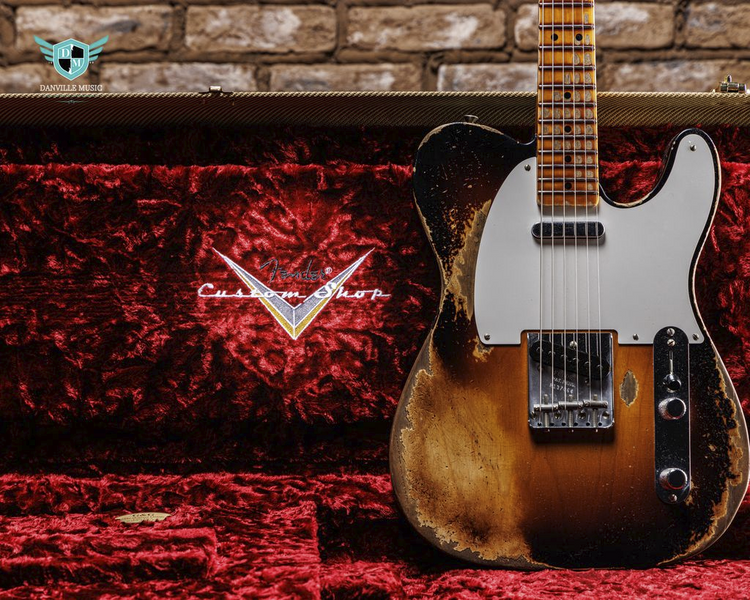When it comes to electric guitars, few names resonate as strongly as PRS (Paul Reed Smith). Known for their high-quality craftsmanship and stunning aesthetics, PRS guitars have carved a niche in the world of music. Whether you're a seasoned musician or just starting your journey, understanding the models that make up the PRS lineup can guitar store be incredibly beneficial. In this article, we’ll take a deep dive into the various models and features that have players raving about PRS guitars.
A Closer Look at PRS Guitars: Models That Rock the Stage
PRS guitars are not just instruments; they are pieces of art designed for performance. Founded in 1985 by Paul Reed Smith, this brand has gained a reputation for producing versatile guitars that cater to different playing styles. From rock to jazz and everything in between, PRS offers something for everyone.
The Evolution of PRS Guitars
From Humble Beginnings to Iconic Status
In the early days, Paul Reed Smith built guitars by hand in his garage. His dedication to quality soon caught the attention of musicians, propelling PRS into popularity. Today, these guitars are synonymous with precision engineering and innovative designs.
Key Milestones in PRS History
- 1985: The first PRS guitar is produced. 1990s: Signature models for artists like Carlos Santana hit the market. 2000s: The introduction of new features like bird inlays and unique body shapes further solidifies their reputation.
Popular Models Overview
The PRS Custom 24
One of the most iconic models from PRS is undoubtedly the Custom 24. With its sleek body shape and versatile sound, it's no wonder this model is a favorite among guitarists.
Features of the Custom 24
- Body Type: Solid mahogany with a carved maple top. Pickups: 85/15 treble and bass pickups. Neck: Wide thin maple neck for comfortable playability.
The PRS McCarty Model
Named after Ted McCarty, who was instrumental in developing electric guitars in the past, this model brings vintage vibes combined with modern playability.
Key Characteristics
- Body Shape: Single-cutaway design. Pickups: McCarty LT pickups for warm tones. Controls: Push/pull tone controls for coil-splitting options.
Gibson Les Paul vs. PRS Guitars
Many players often find themselves torn between choosing Gibson Les Paul or a PRS guitar. Let’s explore how these two giants compare.
Sound Quality
- Gibson Les Paul is known for its thick, creamy sound ideal for rock genres. On the other hand, PRS guitars offer versatility across genres thanks to their pickup configurations.
Build Quality
Both brands pride themselves on quality craftsmanship; however, while Gibson focuses on traditional designs, PRS incorporates innovative features tailored for modern players.
Why Choose a PRS Guitar?
Versatility Across Genres
Whether you’re shredding metal riffs or strumming soft ballads, PRS guitars adapt beautifully to different musical styles. This versatility is one reason they are found in many professional guitar stores around the world.
Aesthetic Appeal
PRG's stunning finishes and intricate woodwork make them visually appealing instruments that stand out on stage. The “bird” inlays are particularly noteworthy - they add personality without being overly flashy.
Getting Started with Your First PRS Guitar
So you've decided to buy your first PRS! Here’s what you need to consider:
Budget Considerations
PRS offers models at various price points:

Choosing the Right Model
Think about your preferred music style:
- Rock? Try out a Custom 24. For jazz influence? The Hollowbody II might be your best bet.
Maintaining Your PRS Guitar
Just like any valuable instrument, proper maintenance ensures longevity:
Regular Cleaning
Use a dry cloth after each session to remove sweat and oils from your hands that can damage finishes over time.
String Changes
Changing strings regularly helps maintain sound quality; opt for strings suited to your playing style - heavier gauge for rhythm playing or lighter gauge for solos.
PRS Guitars' Influence on Modern Music
Many contemporary artists use PRS guitars:
Carlos Santana Mark Tremonti John MayerTheir unique tones have inspired countless musicians worldwide!
FAQs About PRS Guitars
1. What makes PRS guitars different from other brands?
PRS combines craftsmanship with innovative technology offering unique tonal qualities suitable for various genres.
2. Are SE models good for beginners?
Absolutely! The SE Series provides excellent quality at an affordable price point, making it perfect for newcomers.
3. Can I modify my PRS guitar?
Yes! Many players customize their pickups or hardware based on personal preference without voiding warranties if done correctly.
4. Do all models come equipped with locking tuners?
Not all; however many high-end models do feature locking tuners which enhance tuning stability during performances!

5. Where can I buy an authentic PRS guitar?
You can visit any authorized guitar store or check online retailers specializing in musical instruments to ensure authenticity!
6. Is there an advantage to owning multiple models?
Owning different models allows you access to varied tones and playability options enhancing your overall musicality!
Conclusion
In conclusion, taking "A Closer Look at gibson les paul PRS Guitars: Models That Rock the Stage" reveals why these instruments have become staples among professional musicians globally! Their commitment to quality craftsmanship coupled with aesthetic beauty makes them stand out as reliable tools for artistic expression across genres—from rock legends wielding their Gibson Les Pauls through soulful ballads played on beautifully crafted hollow bodies—it’s clear why players keep coming back! So whether you're shopping at your local guitar store or browsing online catalogs—keep an eye out because you never know when inspiration will strike next!
